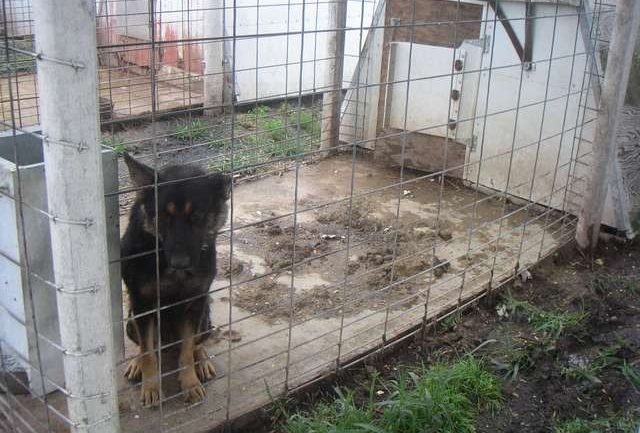
Written by Chanel Baron, DVM
When considering adopting a new family pet, each person must decide where they will start looking for their new companion. Of course, some people find animals as strays or inherit them from a family member, but the majority of people obtain their pets from one of three main areas: a breeder, a pet store, or an animal rescue shelter.
Not only are these three categories of animal production/adoption vastly different from each other, but within each category, there is a huge spectrum of variation. Some breeders have one pet they breed from their household, and treat as a family member. Other breeders are huge, multi-warehouse facilities where the animals’ roles are strictly for reproduction and profit. While pet stores seem different from breeders, they often source their pets from large breeding facilities known as puppy mills, which are a much different setting than the “puppy in the window” we see in the mall.

Animal shelters, however, acquire their pets as strays or from owners who no longer can or want to have them. What unites all of these facilities, however, is that pets in breeding facilities, pet stores, and shelters are housed in close quarters, usually with dozens to hundreds of animals within the same place. Animals in these facilities are all likely to transmit diseases to one another due to their high-density housing arrangements.

Upper respiratory infections are one of the most common diseases found in animals contained in high-density housing arrangements. Abbreviated URI (upper respiratory infection), this term encompasses many different infectious agents, different bacteria, and viruses, that can trigger illness in pets. Often the term CIRDC—or canine infectious respiratory disease complex—is used for “dog URIs” which illustrates how multifactorial and complicated an upper respiratory infection can be.
Other than being housed in close quarters, another factor that contributes to the rate of URIs in these high-density housing facilities is that the animals housed there are often young or unhealthy. Just as in humans, young animals with underdeveloped immune systems are at high risk of acquiring an infectious disease. Similarly, older or unhealthy animals that may have an underlying illness or suffer from malnutrition and neglect also do not have strong immune systems and are also more likely to acquire an infection in these housing situations. Some of these animals, especially if already ill or if not receiving appropriate attention and care, will even die from their infections.
There are clear, main causes of the high prevalence of URIs in breeding facilities, pet stores, and shelters. Each category of facility, and each specific facility within the category, experiences one or more of these causes at different degrees: overcrowding, lack of sanitation, lack of veterinary care, lack of clean food and water, and lack of daily observation by human caretakers.

As stated above, upper respiratory infections come in many forms—different bacteria and viruses are responsible for this type of illness in dogs and cats. For example, some of the most common bacteria involved in CIRDC include Bordetella Bronchiseptica, Streptococcus, Pasteurella, Pseudomonas, and Mycoplasma. Common canine viruses involved in CIRDC are parainfluenza, adenovirus, and herpes virus. All being highly contagious, housing animals in close contact allows disease to swiftly spread from animal to animal via coughing, sneezing, and nose to nose contact. To make these diseases even more contagious, many of these facilities have poor ventilation and a lack of personnel training, so when an animal is showing signs of illness, symptoms persist for a longer period before they are noted, the animal is not promptly removed from the environment, and the area is not properly sanitized. These factors help disease to swiftly spread.
Of the three main categories, animal shelters stand out as facilities where animals showing signs of illness are removed from the general population and placed in quarantine. Care is taken to not allow sick animals to mix with the healthy population, and staff is encouraged to practice strict sanitation; however, given the lack of funding for many animal shelters, they often have to rely on volunteers who may or may not have received proper training on sanitation, and who may not understand the principles of disease transmission in general. From my personal experience in animal shelters, while the volunteers have great intentions to keep the animals safe and healthy, many do not understand how to practice the sanitation measures needed to prevent disease transmission.
Let us breakdown a few specific examples of the factors that contribute to URIs in these facilities.
Lack of proper sanitation

This is a main cause of URIs and other communicable diseases in these facilities. Without routine cleaning, ammonia levels build up from the vast amount of urine produced by the densely packed animals. This ammonia irritates the respiratory system, creating inflammation, priming it for the development of a URI. Dogs in puppy mills are often housed in wire cages or in straw bedding that is not ever or often thoroughly cleaned, which can accumulate ammonia and also predispose the animal to urine scalding and skin irritations/infections.
It is common for pet stores to house puppies and kittens in bedding composed of shreds of paper. Given young animals need to urinate and defecate often, these paper shreds become saturated daily with feces and urine, contributing to the poor sanitation that prompts young animals in pet stores to become ill. Fecal matter itself can transmit an infectious disease, such as coccidia (an intestinal parasite) or parvovirus (an intestinal virus), which in turn causes dehydration, weakens the immune system, and prompts the animal to develop a secondary URI.
Lack of proper medical care

Too often, animals in puppy mills and breeding facilities do not receive veterinary care, but are “treated” with ad hoc, ineffective “home remedies.” Not only have I witnessed this all too frequently firsthand as a veterinarian, but The Humane Society also has data to support this as commonplace practice in privately owned breeding facilities. Rather than being taken to a vet, sick animals in these facilities are often administered antibiotics inappropriately: wrong dose, wrong class of antibiotics, or antibiotics being used to treat a viral infection. Furthermore, sick animals are also often administered treatments found on random internet websites. Not only are all of these measures ineffective, but they ultimately do not help the animal feel better, extending its illness, and are thus inhumane.
Prevention going forward

Many of these causes for URIs have obvious solutions: providing proper sanitation should not only be required but should be a basic right of animals in all facilities. Proper cleaning practices, such as ensuring bedding is promptly cleaned and free of urine and fecal matter would not only decrease URI and other disease transmission but enhance each animal’s quality of life. Reducing stress, such as decreasing loud noises and reducing overcrowding, are two other simple measures that would decrease URI and illness in these facilities.
Two other obvious solutions that would increase the health of animals housed in these facilities are 1) proper routine veterinary care and 2) requiring proper vaccine protocols.
A proper vaccine protocol would make a fast difference in disease transmission in all high-density animal facilities. An excellent example of vaccines substantially reducing illness comes from a city animal shelter in west Texas. A 2021 study performed at Lubbock Animal Shelter showed that when stray and surrendered dogs were vaccinated upon intake (DAP and Bordetella vaccines were administered) there was a significant decrease in the number of coughing dogs. In this study, if over 90% of dogs in the population were vaccinated, the rates of CIRDC and cough dropped dramatically. This basic vaccine protocol ultimately helped dogs remain healthy, and thus increased their quality of life and ability to be adopted.

Currently, the USDA (which “regulates” puppy mills) does not implement a required vaccine protocol. For pet stores, each state has the authority to implement requirements for veterinary care or vaccines, but most states do not have even the most basic of requirements. Most states do not regulate pet stores at all, nor require even a first core puppy or kitten vaccine (DAP and HCP, respectively) to be administered, even though animals housed are young, have underdeveloped immune systems, and are kept in crowded quarters. Michigan is the only state that has a vaccine requirement, which is that Michigan requires vaccines to be administered by a veterinarian, but they do not require animals to receive vaccines.
Given that in most states it is illegal to sell a pet under eight weeks of age, and that the first core puppy or kitten vaccine can be administered at six weeks of age, it is my strong opinion that all puppies and kittens in pet stores should be required to have their first vaccine administered by a veterinarian to protect their health and reduce disease transmission. As stated in the Lubbock Animal Shelter example above, we know that the implementation of a vaccine protocol will significantly reduce URIs and disease transmission in these pet populations.
There are few, if any, published research studies on vaccine protocols and disease transmission in puppy mills; the reason for this is obvious: these privately owned businesses would come under more scrutiny for their high disease prevalence and poor animal care if such research was allowed to be conducted. The most information we have about puppy mills is typically gained from undercover investigations into these facilities. From these types of investigations, it is clear that most, if not all, puppy mills do not vaccinate their animals.
As a voter, I encourage you to support legislation for the regulation of puppy mills and pet stores. It is my hope that at minimum, such legislation would require proper medical care and husbandry for animals being sold, including implementing a vaccine protocol. Ideally, these facilities would not exist at all, as the homeless animal population in shelters costs governmental agencies millions of dollars a year and still results in thousands of adoptable animals being euthanized due to overcrowding and lack of high enough adoption rates.
As an animal lover, I challenge you to spread the word about the horrors of the pet shop and puppy/kitten mill industry. Please remember to adopt, don’t shop when adding a new animal family member.




